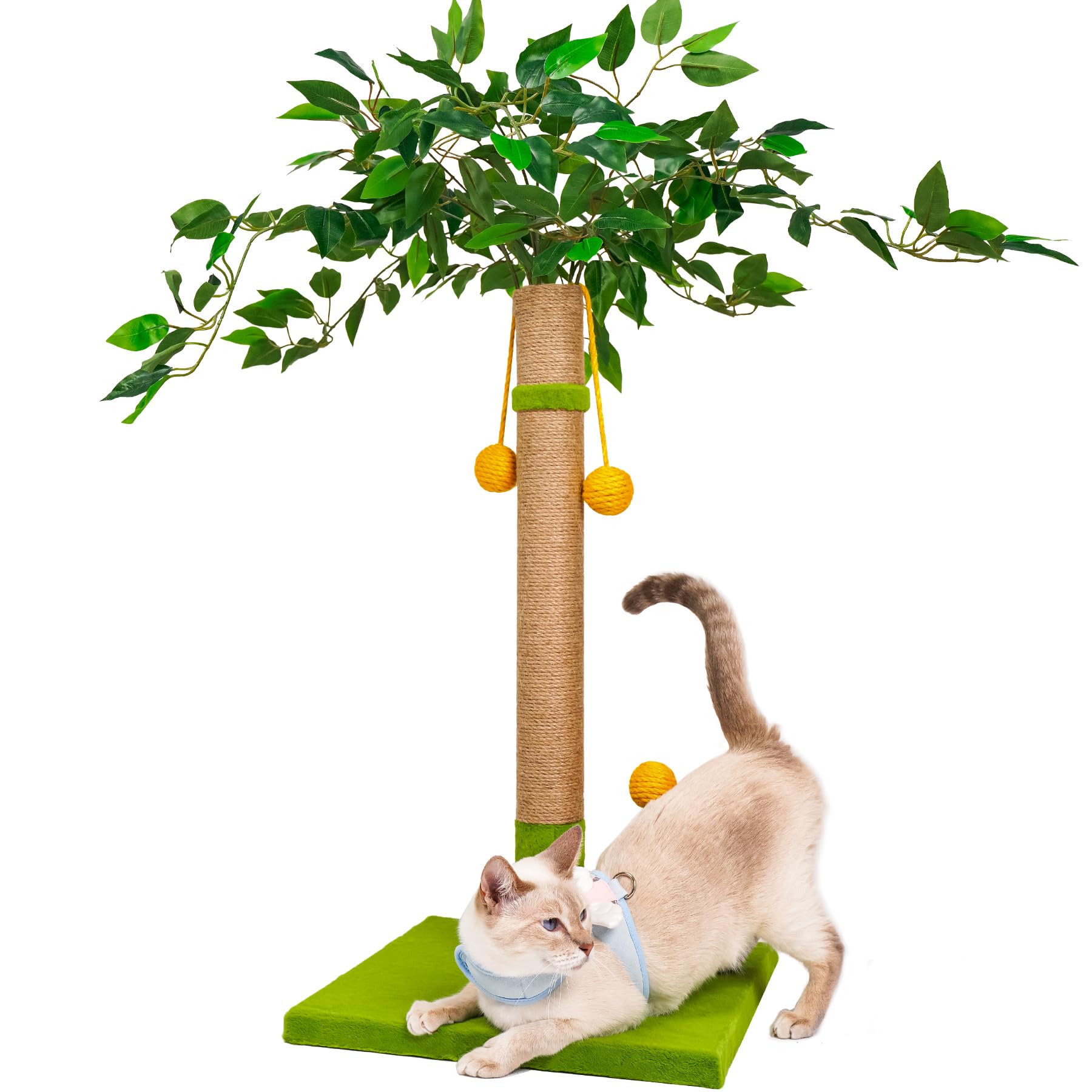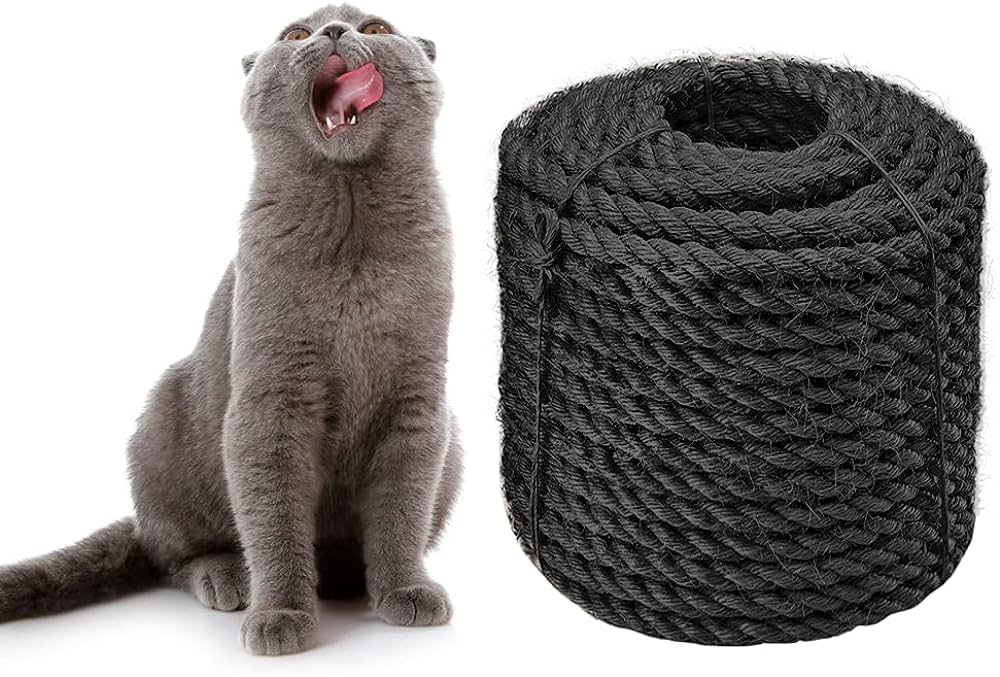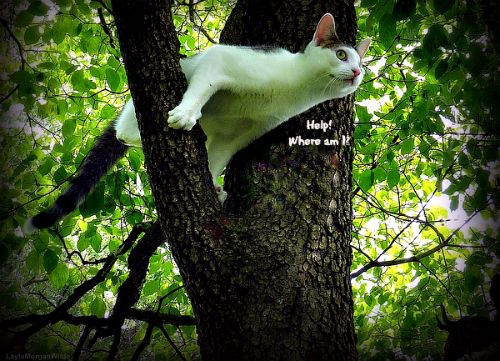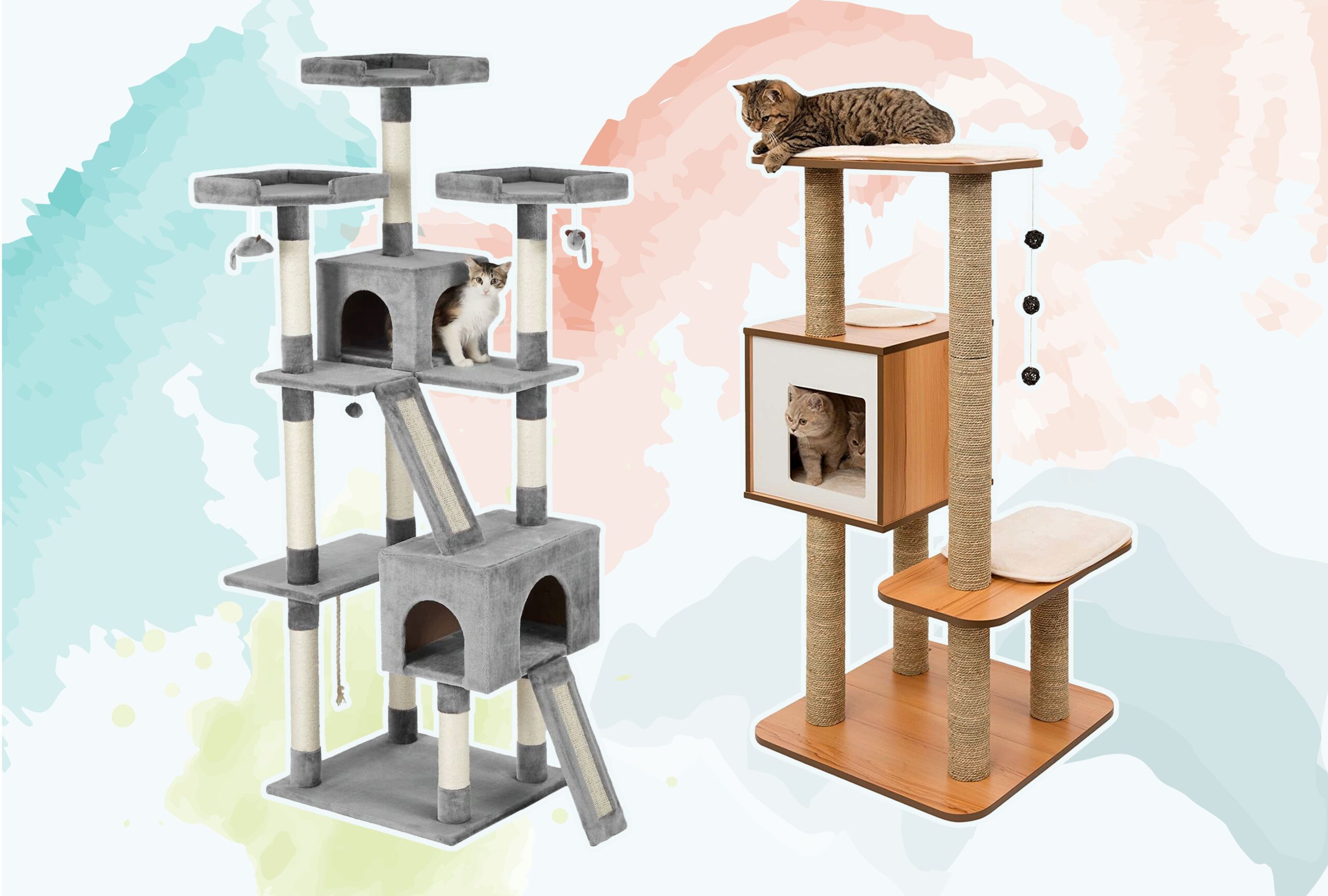To stabilize a wobbly cat tree, secure it to a wall or add a wider base. Ensure all screws and bolts are tightened for improved stability.
A cat tree is an excellent addition to a pet owner’s home, giving cats their own space to climb, scratch, and relax. Over time, these structures can become unstable, which can be distressing for both the owner and the pet.
It’s essential to address a wobbly cat tree promptly to maintain your cat’s safety and trust in their play space. With simple adjustments and routine checks, it’s possible to restore the cat tree’s integrity and extend its life, all while keeping your feline friend happy and active. Remember that a well-maintained cat tree not only ensures a safe environment for your pet but also avoids potential damage to your home furnishings.

Credit: www.amazon.com
Identifying Wobbly Cat Tree Issues
Does your cat’s playground wobble each time it pounces on? Identifying wobbly cat tree issues is vital. Cats love a stable place to climb and relax. A shaky cat tree can make them feel unsafe. Let’s spot and fix the problems!
Common Causes Of Instability
Stability is key for cat trees. Many elements can make them unsteady. We need to check these out:
- Loose bolts or screws: These can make the structure shaky.
- Uneven floor: Trees can tilt if the floor isn’t level.
- Worn out parts: Over time, parts can wear down and weaken.
- Poor design: Some trees are not built to stay upright.
Signs Your Cat Tree Needs Attention
Not sure if your cat tree is secure? Check for these signs:
| Sign | What it Means |
|---|---|
| Swinging or bending | Parts might be loose or damaged. |
| Squeaking noises | Joints or connections could be weak. |
| Movement at the base | The base needs to be more secure. |
| Cat hesitates to climb | They sense the instability. |
Regular checks keep your cat safe and happy. Let’s fix that wobble for good!
Foundational Fixes
No one likes a shaky cat tree, especially your feline friends. Stable foundations mean safer playtime. Let’s make that cat tree as sturdy as a mighty oak.
Choosing The Right Location
Placing your cat tree matters more than you think. Pick a corner spot. Corners have two walls. They support cat trees naturally. Corners reduce sway. Avoid busy areas. Feet and vacuums won’t bump it.
Improving Base Stability
Your cat’s tree needs a strong start. Check the base. Is it wide? It should be. Here’s a tip: Add weight. Use sandbags or weights. Place them at the base. Heavier base, less wobble.
Check the bottom next. Rubber grips or anti-slip mats work wonders. They prevent sliding. Attach them under the base. Now your cat can leap with confidence.
Structural Enhancements
A shaky cat tree can worry cat owners. A stable structure is crucial for your cat’s safety. Let’s reinforce it with some structural upgrades. These improvements will make your cat tree sturdy, giving you peace of mind.
Reinforcing Vertical Supports
Stable vertical supports are the backbone of a secure cat tree. Here’s how to strengthen them:
- Check each post for damage or wear.
- Tighten all loose screws or bolts.
- Wrap posts with sisal rope for added durability.
- Replace flimsy poles with thicker, stronger material if necessary.
To ensure further stability:
- Use brackets or braces to secure posts to base.
- Glue felt pads under the base for a non-slip grip on the floor.
Upgrading Hardware Components
Stronger hardware means a less wobbly cat tree. Follow these steps:
| Hardware | Action |
|---|---|
| Screws | Replace with longer or wider gauge |
| Bolts | Upgrade to industrial strength |
| Brackets | Add or replace with heavy-duty versions |
| Joints | Stabilize with wood glue or metal fasteners |
Secure each layer of the tree. Add a flat washer under screw heads and bolts. This spreads out the force and keeps the tree standing tall.
Credit: www.reddit.com
Material Matters
If your feline friend’s tree is shaking and stirring, it’s time to think materials. The right stuff can transform a trembly tower into a steady sanctuary. Look beyond soft cushions and playful danglers. Consider the foundational fabrics and woods. These elements are key to a stable cat tree. Let’s dive into how selecting specific materials can drastically improve the durability and stability of your pet’s prized perch.
Selecting Durable Fabrics And Woods
Durable fabrics and solid woods are the backbones of any sturdy cat tree. Scratch-friendly surfaces are a must. They should withstand constant clawing and climbing. Opt for tightly-woven fabrics like heavy denim or canvas. These resist fraying and stand the test of time.
- Dense sisal fabric for post wrapping, great for scratching and grip.
- Heavy-duty carpet remnants that stay plush and intact.
- Robust woods like pinewood or plywood support the structure well.
- Avoid soft woods, which wear down quickly and may splinter.
Choose woods that remain unfazed under stress. Particleboard may sag or break, especially in larger cat trees. Instead, invest in quality solid or engineered woods for a foundation that lasts as long as your cat’s nine lives.
Benefits Of High-density Materials
Why pick high-density materials? They’re heftier, so they offer more stability. Weight in the base keeps the cat tree grounded. Avoid lightweight plastics or flimsy materials. They could tip over, risking your cat’s safety and your peace of mind.
The perks of high-density materials include:
- Added weight for a low center of gravity, reducing wobble.
- Enhanced durability to cope with constant use.
- Less likely to be knocked over, crucial for agile cats.
Consider materials like MDF (medium-density fibreboard) or heavyweight fabrics. They increase overall stability and ensure your cat enjoys a safe climbing experience.
Remember, the right materials matter. They ensure joy and safety for your feline while they lounge, pounce, or snooze atop their trusty tree.
Diy Vs. Professional Help
Stabilizing a cat tree is essential for your feline’s safety. Deciding between DIY or seeking professional help can be puzzling. This section will clear the air, guiding you on when to roll up your sleeves or call in the experts.
When To Tackle Improvements Yourself
DIY fixes are great for simple issues. Grab your tool kit if:
- The base needs extra weight. Use sandbags or weights for stability.
- Screws are loose. Tighten them with a screwdriver.
- The cat tree frame wobbles. Attach corner braces for support.
Add non-slip pads beneath the base to prevent sliding. Extra padding can also do wonders.
Situations That Call For Expert Assistance
Professional help is wise for complex issues:
| Structural Damage: | A pro can replace broken parts safely. |
| Major Upgrades: | Experts ensure modifications won’t harm your pet. |
| Custom Adjustments: | Specialists craft additions that match your home’s decor. |
Seek a vet’s advice if your cat has special needs. Contact customer service for warranty issues.
Maintaining A Sturdy Cat Tree
Your cat loves their tree. The right maintenance keeps it safe and fun. A wobbly cat tree can scare your furry friend. Worse, it could fall. Follow these steps to keep the cat tree sturdy for years.
Regular Inspection And Tightening
Checking your cat tree often is key. A monthly look can catch loose parts. Nuts and bolts may need a quick tightening. Keep your cat tree safe with these short tasks:
- Wiggle test: Gently shake the tree to find wobbles.
- Spot check: Look for wear and tear on all areas.
- Screw tightness: Use a screwdriver to secure any loose screws.
These actions prevent falls and injuries. They also increase the tree’s lifespan.
Long-term Care Tips
To ensure a lasting structure, consider these long-term care tips:
| Care Action | Details |
|---|---|
| Base Check | Strengthen the base. Heavier bases reduce tipping. |
| Replacement Parts | Swap out worn pieces. Order from the manufacturer for the best fit. |
| Cleaning | Vacuum regularly. Clean with cat-safe products. |
These steps ensure a clean, sturdy tree. Your cat enjoys a safe space. Plus, a well-kept tree looks better in your home.

Credit: www.reddit.com
Frequently Asked Questions Of How To Make Cat Tree Less Wobbly
How To Stabilize A Homemade Cat Tree?
To stabilize a homemade cat tree, ensure its base is wide and hefty, offering a stable foundation. Attach it securely to a wall if needed for added support. Selecting the right materials and a balanced design is crucial for stability.
Can I Reinforce My Cat Tree’s Base?
Yes, you can reinforce your cat tree’s base. Adding weight or expanding the base can make it steadier. Materials like plywood or MDF can be attached underneath for reinforcement. Ensure any modifications are securely fastened and safe for your cat.
Why Does My Cat Tree Wobble?
A cat tree may wobble due to an unstable base, uneven weight distribution, or wear and tear over time. It’s essential to check the tightness of all screws and the condition of the tree’s components to determine the cause of instability.
What Materials Strengthen Cat Trees?
Materials such as solid wood, heavy-duty chipboard, or reinforced cardboard can strengthen cat trees. Metal brackets and high-quality fasteners also enhance structural integrity. Choose durable coverings like sisal or heavy carpet for added support and longevity.
Conclusion
Ensuring your cat tree’s stability is crucial for your pet’s safety and your peace of mind. Simple adjustments or enhancements can make a significant difference. Always double-check the tree’s base, tighten loose components, and consider adding weight or wall brackets for extra security.
With these tips, your feline friend will enjoy a safer, steadier playground. Give your cat the gift of secure, carefree climbing today!
